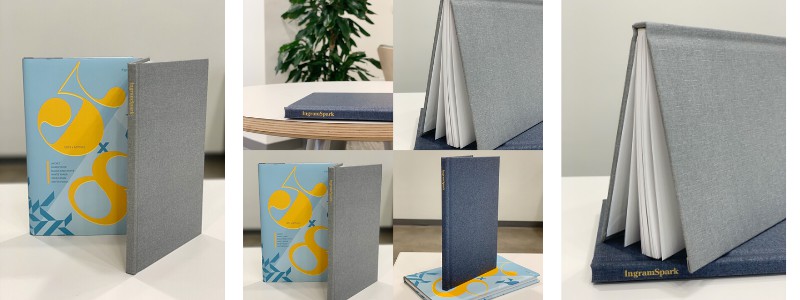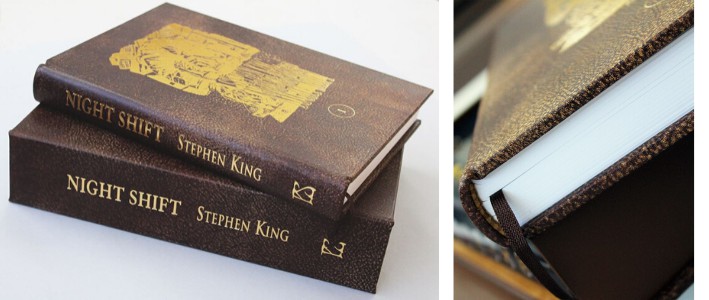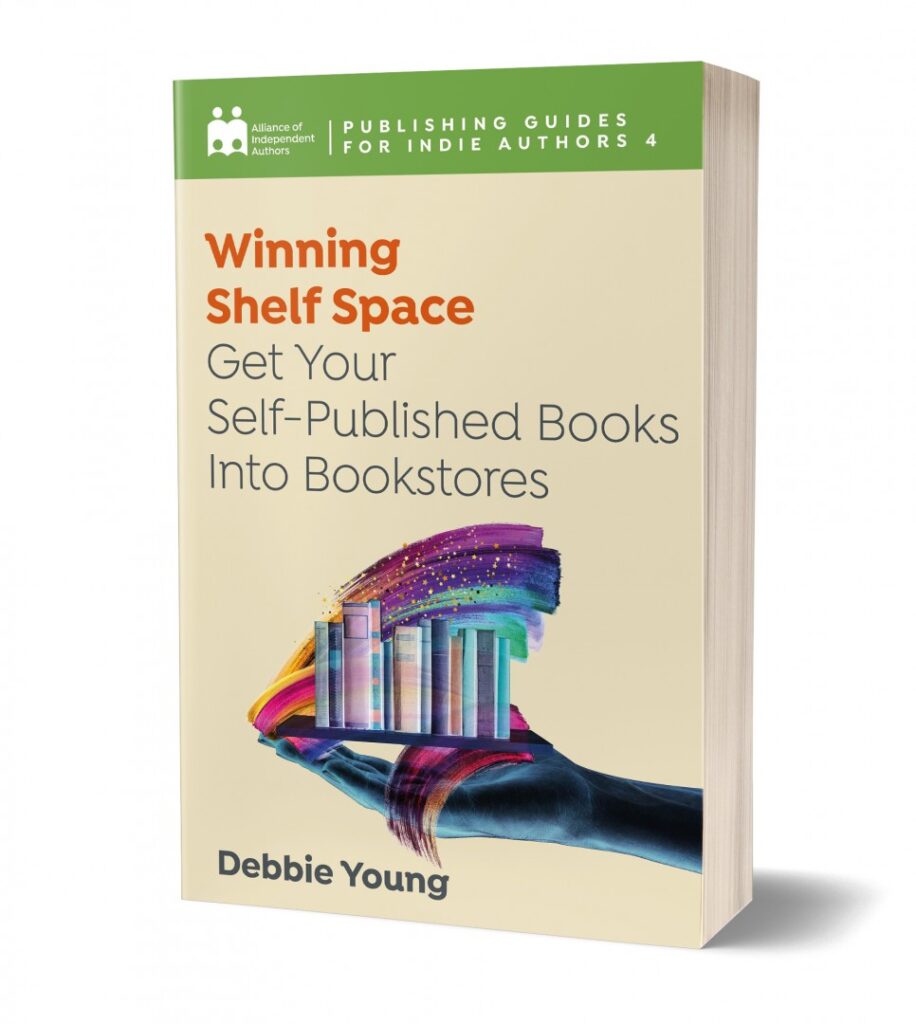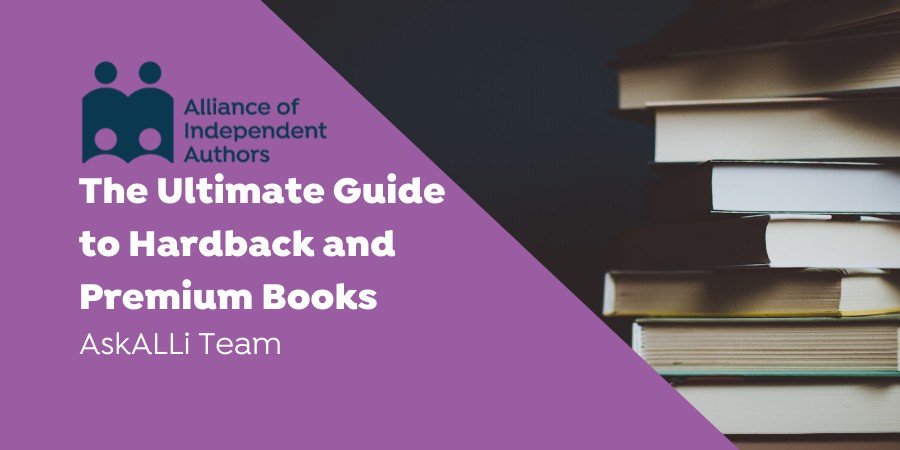While the digital age combined with Covid-19 lockdown has seen an increase in ebook sales, there are a huge chunk of readers who are staunch paper lovers—specifically, hardback or premium books. The Alliance of Independent Authors has published a guide book to help you get your print books into bookstores. Members can sign in and navigate to the BOOKS > SELF-PUBLISHING GUIDES menus. If you're not a member, you can purchase a copy from our bookstore here.
With thanks to our partner services in particular, IngramSpark and Blissetts who helped author the post. Today's post outlines how you can create and produce high quality products. This is the ultimate guide to hardback and premium books.
The Ultimate Guide to Hardback and Premium Books: The Hardbacks, an Introduction

Benjamin Hughes, Manager, Business Development – IngramSpark UK
In an increasingly digital world, authors and publishers have services and tools available to adapt to the changing demands of readers. While print is still the dominant format of choice for readers, the previous boom in eBooks in the early 2010s and now the exponential growth of audiobooks, highlight the changing trends in how people consume content. It is encouraging to see that book sales in general remain strong, resilient, and relatively stable over time.
IngramSpark continues to help publishers and authors of all sizes respond to a changing market across formats.
For the price-conscious customer or the casual reader, paperbacks and eBooks are appealing and convenient options. Paperbacks are relatively portable and eBooks, of course, removing physical space implications entirely except for the reading device itself. Audiobooks tick the same box as eBooks from a physical, or lack thereof, perspective, but are typically at higher price points – often as a result of the production costs involved and the hiring of a well-known narrator.
There is another format though that remains in our hearts; the hardback. How many of us have eagerly anticipated the release of our favourite author’s new work and paid almost £20 because we love feel and experience of the physical object? I know I have hundreds of times and will continue to do so. There is something about the hardback book that represents what book lovers stand for.
At IngramSpark, and across our organisation in general, we are always looking at ways to help authors and publishers meet all of their needs. Format and the ability to have their books in multiple formats, is something that comes up often. We help authors produce tens of thousands of books every year in a variety of formats and continue to develop technologies and processes that mean our product types, whether paperback or hardback, are the highest of quality, professional works. We have the experience and expertise to advise, including how to enhance your project and using paperback, for example, almost as a springboard to producing a hardback edition.
There are some key considerations to think about before you take the plunge and order a box of hardbacks and I am going to explore a few of them within this article. Thankfully, routes to market are becoming quicker and easier than ever and we pride ourselves on giving authors the help they need to realise their project and get their books out to the world. If any readers of this article want to get in touch with a specific question that is not covered here, feel free to contact me at [email protected].
Find out more about IngramSpark on their website and Facebook.
The Ultimate Guide to Hardbacks and Premium Books: Why Choose a Hardback?
So you’ve completed your manuscript and are ready to publish. Surely the reward for all of that hard work is the joy of seeing your words printed inside a beautifully designed cover and produced as a finished book? We couldn’t agree more and IngramSpark has a range of different hardback options available to authors.
Something we often tell our authors is to do market research. What kind of book have you written? Whilst there are certainly no rules here, it’s important to get a sense for what other authors in your genre are doing and it won’t take long to browse the bookshelves of your local shop or take a look online to see what kind of books are doing well within say, romantic fiction, and what formats to they tend to be? Likewise, with historical fiction, poetry or children’s story books, the rules aren’t set in stone but it’s easy to start noticing trends and you should keep the retailer and end consumer in mind. Will an independent bookseller look kindly upon an expensive, hardback edition of debut short stories when it could just as easily be a paperback? In non-fiction, if you’ve written a history of something, be it a war or a person of interest, should you be thinking about doing a hardback edition to give a greater sense of authority or shelf appeal?
A lot of these considerations are down to the preference of the author and, ultimately, the reader, but it’s worth taking the time to do your research and try to position your book appropriately. At IngramSpark, authors have the benefit of setting up multiple formats and enabling them all for distribution among our retail channels so that the print-on-demand nature of our business allows the bookshop or online retailer to order the format that suits them based on customer demand.

The Ultimate Guide to Hardbacks and Premium Books: Pricing
Pricing is something that any author should consider regardless of format but when it comes to hardback books, you have to be sure that you can justify the higher production cost. IngramSpark is seeing an increase in demand for hardbacks and as a result, we’re constantly looking at ways to improve efficiency and affordability of this format.
At IngramSpark, we base our pricing on a range of considerations including page count, finish type, order quantity etc. and are available to help answer any questions you may have.
Hardback books usually carry a higher RRP (recommended retail price) because of the cost of the materials and the time it takes to produce and distribute.
Here’s an example of a transaction:
- Your hardback book is priced at £20.00
- You have set a trade discount of 50% which means a shop or online retailer buys your book for £10 (this is towards the upper limit that you would want to give away but I am purposely making the math simple).
- The production cost and associated fees (shipping, for example) cost £6.
- You, the author, makes £4 from every sale after this transaction. *
*this is a fictional example and costs vary depending on the kind of book you order and the pricing that is applied.
The Ultimate Guide to Hardbacks and Premium Books: Format Types
Once you’ve decided to create a hardback edition of your title, it’s time to get more specific with your format type. Many printers will offer a range of format types within one general product category and it’s important to know what these are and how they impact your overall project.
At IngramSpark, we’ve invested further in our product range to ensure that authors can choose the hardback type that works for them. We have several different types:
- Standard ‘case laminate’: your cover image is printed directly onto the front and back cover board.
- ‘Jacketed case’: you can have your cover image printed on a dust jacket that wraps snugly around the hard cover board (and looks fantastic if I may add).
- ‘Digital cloth’: uses our latest technology to produce a digitally textured laminate that resembles in look and feel the traditional cloth-bound hardbacks saved for those editions that require a little something extra.
We are always happy to send authors and publishers samples of our product types. If any ALLi readers want to get in touch to request a sample or find out more about our product types, then we would love to hear from you. There is also an accompanying video which demonstrates our newly released jacketed case product type which has the cover image printed on the dust jacket and the cover board.
The Ultimate Guide to Hardbacks and Premium Books: Some Further Considerations
In my role, I am fortunate enough to speak with authors on a daily basis and I’ve heard a lot of writers say that they would like to create something special for their readers and ask how to do it.
Maybe you have a dedicated following and want to reward them somehow with a unique offering. Perhaps you have an event coming up and you would like to display something new. Have you carried out some analysis on your backlist and identified a title that is ready to take the next step and become a hardback? Maybe you just want to create a beautiful gift for somebody for being your first reader. If these things ring true with you, then I would encourage you to think about creating a hardback book for your new release or taking the time to re-issue a backlist bestseller. Refresh the copy, update the cover and go again with a glorious collector’s edition.
And after all that…
I hope this article has given you some food for thought when it comes to publishing your book in hardback. If after reading this you are left with more questions than answers, I would encourage you to get in touch with us to explore your options further. We have a dedicated team of industry experts who can give advice on what else you should consider and how to realise your project’s full potential.
The hardback book is something to behold and I am greatly encouraged to know that authors and readers alike are investing time and money into making beautiful objects for people who love the written word in this format.
The Ultimate Guide to Hardbacks and Premium Books: Premium Books, an Introduction

Gary Blissett and Chris from Blissetts
“Books are the perfect entertainment: no commercials, no batteries, hours of enjoyment for each dollar spent.” – Stephen King
Blissetts have been producing beautiful books for many years and we specialise in working hand in hand with authors to help them bring their creations to print.
Pete Crowther of PS Publishing is one such client and a friend of Stephen King. He republishes his titles in limited editions of only 35 books, each lettered A – Z or 1 – 9. Please see the images below to get an idea and insight into just how premium a book can be and the work that often goes into the creation of a premium title. PS Publishing make sure that Stephen King’s titles are produced to a standard beffiting his status, with carefully selected illustrations agreed with King himself, and with finishing touches that befit the work inside: each titles comes enclosed in a beautiful custom clamshell box, with an intricate foil cover that uniquely represent the title in question, and beautiful real leather covers that welcome the reader in and add evidence of the care and premium quality on offer.
Pete is able to focus on all of the crucial finishing touches and produce a premium product that celebrates an author who has long held legendary status and made his mark in the world of publishing. There’s probably very little we could teach Stephen King about publishing his titles and those extra, all important little touches that make a world of difference when printing their book for the first time, but you never know!
Find out more about Blissetts on their website and Facebook.
The Ultimate Guide to Hardbacks and Premium Books: The Creation
Often when new authors come to us, they will have well thought out plans on the subject, the book title, and endless amounts of enthusiasm for the process, but often with very little experience as to how to produce a title that replicates what they want it to be. It is very common for a new client to come to us with piles and piles of hardbacks and paperbacks that they like, books they’ve scoured for design ideas, and then ask if they can produce something similar from a Microsoft Word document. The answer is always “no.” This is where the art of book design begins, and where the author begins to be able to influence and input their personality, working with our experienced designers.
Premium books start with typesetting and design.
Beyond the covers, this is the absolute key to the entire package. You cannot create or call a book premium if the inside has been scraped together in Word. The amount of intricate details that make the difference on the page often only become apparent to authors once they see their initial efforts produced as a printed proof.

The Ultimate Guide to Hardbacks and Premium Books: What You Need to Consider
Some of the key elements that we always guide and manage for authors include:
“Where should I put the foilio?”
When used correctly, folios – the book page numbers, chapter headings and page titles – are the equivalent of a pair of shoes to accompany a beautiful and expensive tailored suit. They are elements often taken for granted, largely unheralded, but absolutely crucial to the entire package. They allow authors to set out the tone, format, and style of writing enclosed when used correctly, they can also go the other way if not given the TLC they deserve. This is an area that needs as much time and attention given to it as the subject itself, and it is very often only on our crafting and formatting pages for clients, that they realise how key this area is. Folios are the readers “Graphic User Interface” – the key to remembering where you got to when last picking the book up, the key to inviting you in to read more. The folio is an artform in itself, they walk a line between subtle guidance and presntation that compliments and heralds a title without over-complicating or embellishing it.
“Does pagination matter?”
Pagination, the order and positioning of pages, is another area that is often easily taken for granted, until the author gets to see their pages printed, at which stage it becomes the most important area by a mile and a real headache when managed incorrectly! Imagine spending months, maybe years on your work of art, only to have none of the chapter headings open on right hand pages, falling awkwardly away from the readers initial gaze, and the index pages to be sat on seperate pages rather than as a flowing double page spread. All of these elements are why typesetting and design are so important.
“How to set up words and pictures?”
Beyond the difference in cost (it is more expensive to produce a book with pictures flowing throughout, as the entire title has to be in colour), we still find most of the authors we work with spend a decent amount of time deciding whether to choose ‘image plates’ (set pages of images, traditionally in the middle of the book) or to include their photos as part of the book itself. It is an intricate and difficult area. Including pictures within the story involves far more work being done to manage the words and their flow, but often helps illustrate the story, whereas image plates on a larger title bring a classic, well established break point for the reader. You even have the refreshing option of choosing a different paper stock to entice the reader in. With autobiographies and authors that are unsure, we usually recommend the image plate option, as it often helps them see this area as being as vital as the words themselves. Images give the reader a break from reading, and should be treated as being as vital and premium as the narration itself.
“What about margins?”
Margins are another key and generally overlooked area of publication—until it gets printed and goes horribly wrong. 100 years of binding and printing really go hand in hand in the secret art of understanding margins. If your words are too close to the centre spread no one will read them. Too close to the outside edges and they will look like they are trying to escape from the page! The perfect book needs space—words need room to breathe. Authors often only notice how important this aspect of a title is when it goes wrong!
“The art of the book cover and all it encompasses”
Last but truthfully first, the book cover and all it entails is the first sign that a book is premium or not. With our clients, it is often standard that beyond the dustjacket, their book will come with a cloth or leather cover featuring the book title and authors name in beautiful gold or silver foil on the front and spine (sometimes with intricate line art included), a traditional and classic touch that always says premium. Most of our authors furnish their dustjackets with Stephen King style levels of presentation and the cover design is an area that most have some ideas for, before they bring them to us to make them a reality. One area often highly underlooked and absolutely vital on cover design is the back cover. As crucial as the front, it is the area where all initial decision making on purchasing is made, where vital elements such as ISBN numbers and pricing must mingle with an introduction to the reader, all while staying consistent with the flow and ebb of the front cover. In a similar manner, the printed spine plays a vital, often overlooked role in furnishing a title.
Hopefully these thoughts will help any author in producing their book. Writing, printing and binding must all go hand in hand and work together to produce a truly premium title.
 Don't forget, if you want to get your books into physical bookstores, ALLi has a guidebook: Winning Shelf Space: Get Your Self-Published Books into Bookstores. Members can get the book for free. Members should sign into the Alliance of Independent Authors membership website and navigate to the BOOKS > SELF-PUBLISHING GUIDES menus. If you're not a member, you can purchase a copy from our bookstore here.
Don't forget, if you want to get your books into physical bookstores, ALLi has a guidebook: Winning Shelf Space: Get Your Self-Published Books into Bookstores. Members can get the book for free. Members should sign into the Alliance of Independent Authors membership website and navigate to the BOOKS > SELF-PUBLISHING GUIDES menus. If you're not a member, you can purchase a copy from our bookstore here.





I have published a book and want to find the best cost effective USA printer.
This is an eye opener. My first novel is being published as a paperback. Now, however, I envision hardback possibilities for two other books I’ve drafted and will soon be starting the rewriting/editing process.
I would like to get a divorce from Author Solutions (Xlibris) and reprint my hardback book with IngramSpark and need guidance. Please help.
Thank you!